Joel Tjintjelaar is a photographer, educator and writer with a passion for black & white photography, architecture and long exposure photography. He runs the bw/vision.com blog where we stumbled upon an article by Red Ognita on the importance of printing superbly in order to call an image fine art. Red Ognita is a multi award-winning black & white fine art photographer and printer with his own studio redlab based in the Philippines. He speaks passionately and with extensive knowledge on creating fine art prints for artists from around the world and the importance of printing in this digital age. We are pleased to share their thoughts and their article “The unforgiving print and paper types” – slightly shortened.
Our mission:
Joel Tjintjelaar: A photograph can only be labeled as a ‘fine-art’ photograph when it has been printed. Preferably large so no detail will escape the viewer’s attention and the craftsmanship and all the time and effort you put into your photograph will come to the surface. To me craftsmanship of photography and digital printing are the essential elements of a work of art. Everything else is just a digital picture.
Red Ognita: I have never seen a person refine faster in the craft of photography than a person who just started to print their work. The print is unforgiving. Every mistake that you make will be seen in a print. That slight movement will produce a “ghost-like” blur. That chromatic aberration brought about by the lens you have and the f-stop of your choice will be evident. That pixel that you pushed or pull more than it can take – yup! banding. And that dust-spot that you failed to clean up will annoy you to no end. Every little thing that you did not intend to do shall be shown to you.
So why print?
You probably know some of the reasons already. The internet has a sea of reasons. From technology mishaps, to heightened value for your work, monetary gain, to memories kept even if you fail. The list goes on and on why should you print your work. But let me add three reasons from a personal standpoint in the mix.
1. It makes you sharper.
Printing makes you more aware of your every move. Having in mind that what you create will be printed later imposes a discipline that you never had before. From the moment you plant that tripod to the point you send it over to the printer – every move calculated. Every adjustment will be precise and purposeful. You will understand the meaning of adjustment in small increments. You will learn how to be patient. You’ll develop a flow of work – of things to check and double check. You will learn the value of consistency.
2. It’s there.
You can actually hold it. It is physical. Everybody can see it where it hangs. Everybody can hold it if you allow them to. Every hour that you spend shooting is an hour away from your home. You have decided that your photography is more important during that time. Every penny that you spend for your photography is a penny away from something else. Don’t you want something to show for? A million brushes but no painting? A print is a tangible object created by you. There was nothing, and now there is something. And you made that possible.
3. It’s a legacy – yours.
With the proper care, your prints will outlast you. It will be something that you will be leaving behind. It is something that you have created out of love and nothing else. It was yours and yours alone. Dictated by no one and was a source of your pride and joy. It is the way you have seen the world – literally and figuratively. It will be something worth keeping.
As it is with many things in life, everything is not for everyone. Printing may not be for you. But if you’re serious in your photography and would like to refine your work – try printing. Best if you yourself will do it – learning will be efficient and much faster, but it doesn’t have to be you. Take into account the economics of a printer and the regularity of printing your work. You can have a custom lab (Hahnemühle Certified Studio) do it and, maybe ask for a feedback or a friend that has a printer. Print it. Sign it. Date it. Keep it. When you look back, you’ll be happy you did.
Choosing paper for your photographic work
Aside from what printer to purchase, one of the most common questions I get asked is what paper to choose. One of the most important choices you’d make when printing is your choice of substrate. Today, with a multitude of options, one can easily find himself lost and confused. Trying and testing fine art papers is expensive and time-consuming. I know, I’ve been there. Without diving too much on the technical side, let me try to help you out narrowing it down. You can start by doing either or all of the following:
- See it for yourself. Expose yourself to different kinds of prints. Check them out. Touch them if you can. (Hahnemühle Sample Books at trade shows or at a dealer or printlab) Do you see your work being in its best with that kind of media?
- Consult with your trusted printer.
- Request/Purchase a Sample Pack from the paper manufacturer. A sample pack normally consists of 2 sheets per variety in A4 size. (Hahnemühle Sample Packs of glossy, matt smooth, matt textured or canvas grades, ask your dealer or printer)
When choosing a paper for your work, there are technical and aesthetic considerations.
Technical
- Gamut – Print color gamut is the range of colors a printer/ink/paper combination can reproduce. Gamut affects highly saturated colors. Print Gamut is also affected by the color space of camera, computer and printer.
- Brightness – Brightness is a measurement of light reflectance of a specific wavelength of blue light. Simply put – brightness represents a more narrow measurement of light reflectance than whiteness. Some papers use optical brighteners (OBA’s) to extend the paper’s tonal range.
- Dmax – How black is black? It is a measure of the deepest black tone a printer/ink/paper combination can reproduce. Prints with poor Dmax look pale and weak. You would notice that glossy paper produces blacker black than matte paper.
- Longevity – It describes the media’s archivability and resistance to fading. Important to museeums, galleries and long-term collectors.
- Durability – The media’s ability to resist abrasion, wobbling, kinking, folding and scratching.
Technical fact sheets can easily be obtained through the paper manufacturer’s website. If you’re wondering why some of the technical information is not disclosed by the paper manufacturer, it is because some traits are dependent on paper/ink and printer combination, and they wouldn’t know what you’re using. If in doubt, ask Hahnemühle´s Technical Application Center via phone or email for support.
Aesthetic
- Natural paper or synthetic Resin Coated (RC)?
- Reflectivity – Glossy or Matte?
- Texture – Smooth or textured?
- Weight – Thick or thin papers?
- Edges – cutted or deckled?
Matte VS. Glossy
Matte papers are based on Alpha-cellulose from wood (Hahnemule Bamboo is made from Bamboo fibers) or cotton rag fibers. Their appeal lies in their appearance and feel. They have a texture like those used for painting (eg: watercolor paper) – a look and tactile experience that is simply absent in plain photo papers. Matte papers reflect less but may pose shine in a motif too. Matte papers are printed with matte black inks that produce on Hahnemühle papers with their premium inkjet coating deep, uniform blackening. Manufacturers such as Hahnemühle offer also glossy (barytes) papers which cover all tastes in high-gloss, semi–glossy or pearlescent. Glossy papers have a higher reflectivity and are printed on with Photo Black ink. This creates deeper blacks and bold colors combined with the desired degree of gloss. In short, if you want pictures, jump downright out of the paper, choose glossy papers. If you want your pictures are subtle and touching, select matte papers.
Personal Choice
I believe that every photographer that print his work should have at least two personal papers. One glossy and the other, matte. Or two papers of the same kind (matte or glossy) but one with a whiter base and the other with a warm natural white base. This would not only make your life easier when printing, but it would also serve as a signature paper for you. Consistency not only in your choice of subject/post-processing but also in your presentation can help in having your own style.
Happy printing, your Red Ognita!
More from Joel Tjintjelaar and Red Ognita:
http://www.bwvision.com
http://www.visionexplorers.com
http://www.exploringvision.com
http://www.ognita.com
https://www.facebook.com/redlabprint
https://www.facebook.com/ognita.red?fref=ts


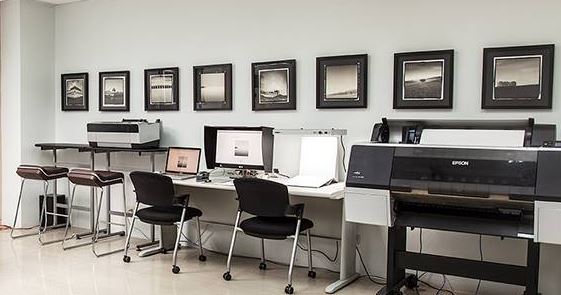
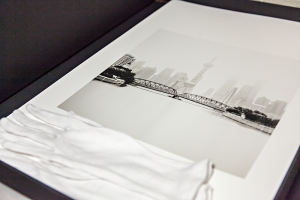
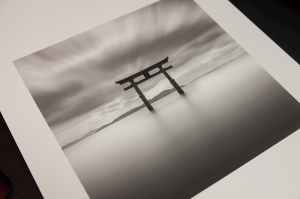
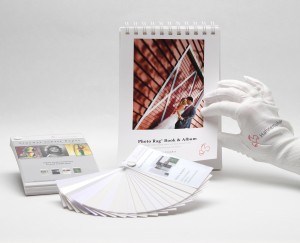
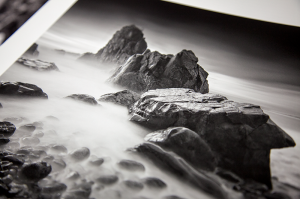






This is an excellent article that puts the photographer-as-artist on the spot when making good decisions for his prints.